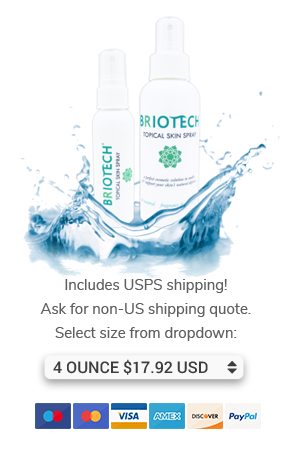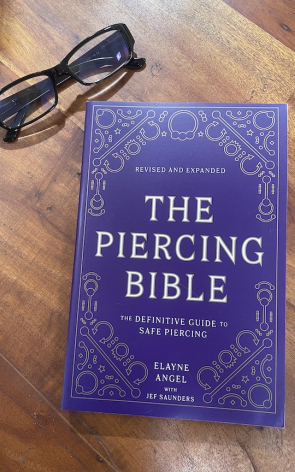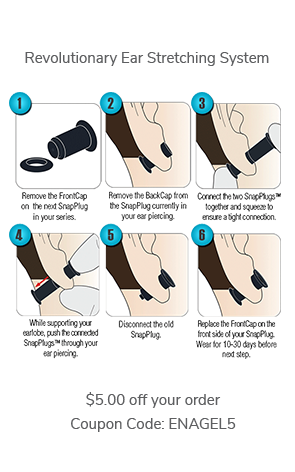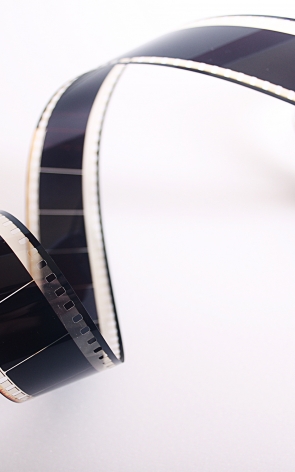I struck up this conversation with a gal who made a comment on a post I made about surface piercings. She wrote:
… I'm getting a five point star surface piercing/s on my right hip in a few days :] gotta talk it over with my piercer but should be cool to go :] ...
I asked her:
Has your piercer been clear with you that the surface piercings are unlikely to stay long-term and that you will most probably end up with scarring instead of jewelry there?
Her reply:
Yeah I've been told that before. I knew it wasn't going to be long term/permanent anyways. Does a surface piercing count as one that goes under the skin, with two balls on each end? because I was thinking of doing that instead of where you can only see one ball. Does that make sense? Sorry if I'm confusing you but id like to get more background info before I get it done. thank you
I provided her with some additional information and I hope it will make her decide to take more time figuring out the best course of action:
Hi Emmy, Well, it is important to be an informed consumer. A "surface piercing" goes through and through--it has an entry and an exit--So a surface bar would have two balls or discs, or gems or other ornamental ends. A piercing of this nature needs specialized jewelry, not just curved bars you might wear in a navel! Surface bars, or an inert flexible plastic are the two best options. A "microdermal," well, here's what my book says about it (and that this may be a better option IF your piercer is skilled and experienced at it: Surface Anchor/Dermal Anchor/Microdermal This relatively new technique with multiple names is becoming explosively popular. During the procedure, a tiny ornament is inserted into a single L-shaped opening that is formed in the tissue. The surface anchor is similar to surface piercing because it is done on flat areas, but placement options are greatly expanded all over the face, torso, and other locations of the body. Unlike the pairs always present in piercings, these have a single adornment per perforation. The embedded jewelry remains under the skin, while the visible threaded end can be changed. Multiple surface anchors are sometimes arranged in patterns. The procedure is performed with a piercing needle or a small dermal punch (see page 240) to make an opening. The jewelry is placed into a small pocket that is formed with the needle, a taper or similar tool, or the jewelry itself. Though surface anchors may bleed more than the average surface piercing, they appear to be easier to heal and not as subject to complications. The mini jewelry used in this procedure has a flat plate (only about 1/4 inch long) that is inserted under the skin to affix it. The longer toe is placed in first, followed by the nublike heel that helps to hold the piece in the tissue. A short upright threaded post passes through the skin and extends to the surface where a gem, disc, or other threaded ornament screws onto the end of it. When inserted correctly, the jewelry appears to be glued onto the skin. Some of the plates are drilled with holes so the tissue grows into the base as it heals to secure the jewelry in place. Variations on the jewelry design are under investigation in the body art community. Healing time is reported to be one to three months. Migration, rejection, scarring, and catching accidents, including traumatic removal, are risks, but the extent of scarring is apt to be limited due to the diminutive size of the wound. To remove it, the jewelry is firmly grasped, the tissue is held steady, and the ornament is forcibly taken from its pocket. If tissue has grown to the plate, a needle may be needed to free the piece. It appears they may be more likely to fall out than surface piercings, but they are less likely to grow out. Single-point piercing (yet another name used for the process) is a relatively new and experimental modification, so there is no data on long-term successes or complications. However, this apparently promising alternative may be superior to surface piercings. Surface anchors are more like ordinary piercings, much less invasive to insert, and certainly not as risky as most of the advanced body art forms described next.
You might want to hold off until you can read my book as it contains loads of information about evaluating piercers and studios, appropriate body jewelry sizes, styles, and materials, aftercare, and much, much more. There's a whole other section about surface piercings, too. The Piercing Bible is on pre-sale at a discount on Amazon.com if you're interested! Sincerely, Elayne Angel The Piercing Bible--The Definitive Guide to Safe Piercing [email protected] http://piercingbible.com/




